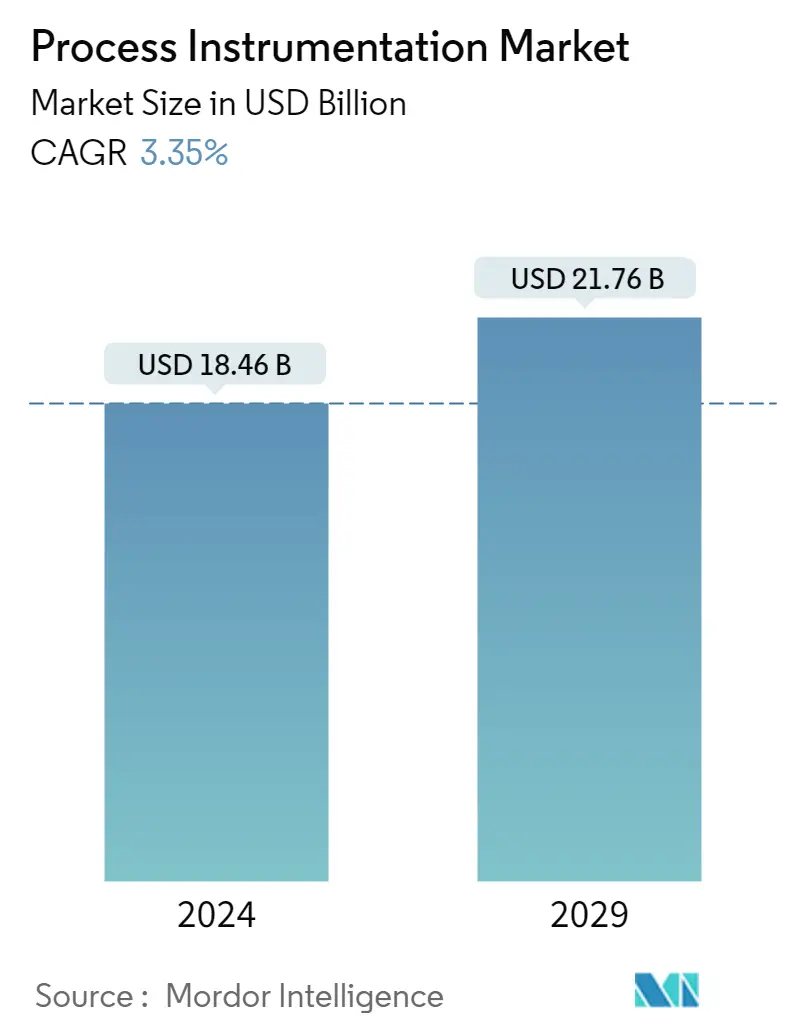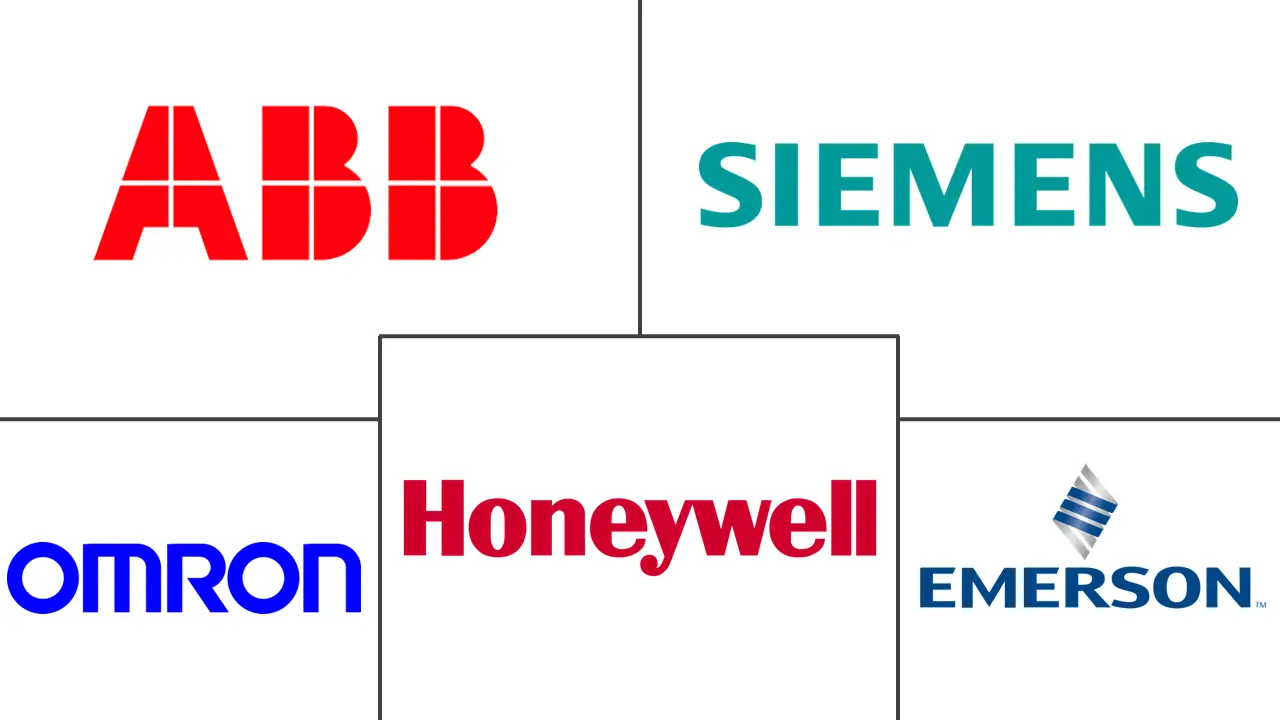Market Size of Process Instrumentation Industry

| Study Period | 2019 - 2029 |
| Market Size (2024) | USD 18.46 Billion |
| Market Size (2029) | USD 21.76 Billion |
| CAGR (2024 - 2029) | 3.35 % |
| Fastest Growing Market | Asia Pacific |
| Largest Market | North America |
Major Players
*Disclaimer: Major Players sorted in no particular order |
Need a report that reflects how COVID-19 has impacted this market and its growth?
Process Instrumentation Market Analysis
The Process Instrumentation Market size is estimated at USD 18.46 billion in 2024, and is expected to reach USD 21.76 billion by 2029, growing at a CAGR of 3.35% during the forecast period (2024-2029).
The market is driven by technological innovations and increasing demands for process control systems. Moreover, cost efficiency, reduction in engineering time, asset utilization, and energy efficiency are some of the major factors driving the growth of the process instrumentation market.
- Process instrumentation equipment is needed in a wide range of end-use industries. The use of process instrumentation equipment offers a host of benefits, including improvement in the quality of the product, emission reduction, reduction in human errors, and cost-savings. Significant parameters like recording, positioning, measuring, and controlling fuel the market's growth as they are essential for the smooth functioning of a manufacturing unit and are top priorities for process instruments for achieving significant levels of absolute reliability, accuracy, and precision.
- A long-term contract is a significant gain for process instrumentation solution suppliers because it ensures a steady stream of money. As a result, it is a critical technique for top companies to secure contracts, particularly from governments. Siemens, for example, revealed in September 2022 that it had been selected to modernize the distributing control network and enhanced metering network for Alexandria Electricity Distribution Company (AEDC), a part of the state-owned Egyptian Electrical Holding Company.
- The manufacturing business has seen an increase in data points created due to the widespread use of connected equipment and sensors and the enablement of M2M communication. According to Zebra's newest industrial vision research, intelligent asset tracking systems centered on IoT and RFID are predicted to outperform conventional spreadsheet-based approaches by 2022.
- The recent surge in the adoption of automation in the manufacturing sector has contributed to market growth. This is due to a greater industrialist understanding of the several advantages of automation in respect of speed to market, investment outlay, and output quality. However, high initial and maintenance investment cost is expected to hamper the market growth over the forecast period.
- The COVID-19 pandemic boosted the demand for industrial automation due to labor shortages. Post Covid-19, companies are increasingly adopting intelligent robotics and technology across the production processes. Robotics are seen as critical instruments for increasing production. The majority of robotic acceptance has happened in the industrial sector, wherein machines do numerous manual jobs more effectively and reliably than humans.
